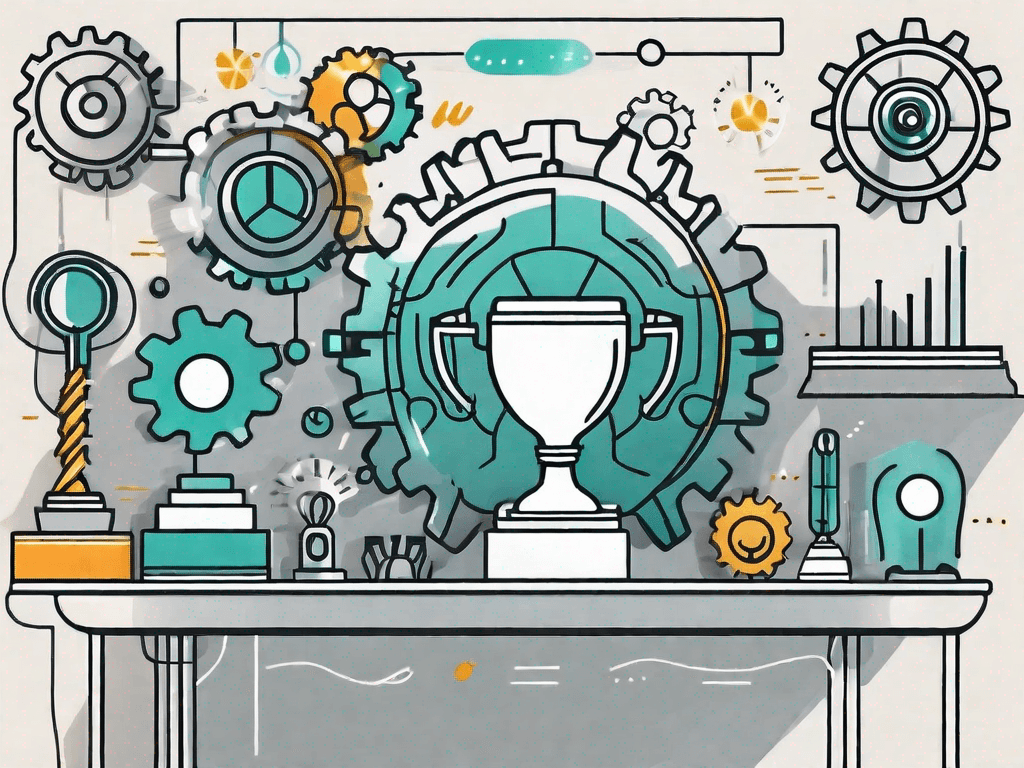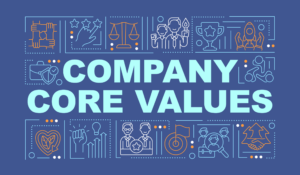One question on every HR Manager’s mind these days is, “How to improve employee morale and enhance productivity?” And one powerful strategy that has emerged as a game-changer to answer this question is workplace recognition. Acknowledging employees for their hard work and achievements not only boosts morale but also drives productivity.
In this article, we will explore the concept of workplace recognition, its impact on employee morale, the role it plays in enhancing productivity, effective implementation strategies, overcoming challenges, and measuring the success of recognition programs.
Understanding the Concept of Workplace Recognition
Workplace recognition refers to the act of acknowledging and appreciating employees’ contributions and achievements. It goes beyond monetary rewards and taps into the psychological aspects that drive intrinsic motivation. Recognition can take various forms, such as verbal praise, public appreciation, awards, or even simple gestures like a handwritten note of gratitude.
But what exactly does workplace recognition entail? Let’s delve deeper into this multifaceted concept.
What is Workplace Recognition?
Workplace recognition is a multifaceted concept that encompasses both formal and informal ways of acknowledging employees’ efforts. It emphasizes the importance of valuing and celebrating individual and team accomplishments, fostering a positive work culture.
Formal recognition often takes the form of structured programs or initiatives implemented by organizations to acknowledge outstanding performance. These programs may include employee of the month awards, annual recognition ceremonies, or performance-based bonuses. On the other hand, informal recognition involves spontaneous acts of appreciation, such as a manager praising an employee during a team meeting or colleagues expressing gratitude for a job well done.
Regardless of the form it takes, workplace recognition serves as a powerful tool for boosting employee morale and motivation. It not only acknowledges individual achievements but also reinforces the value of teamwork and collaboration.
The Psychology Behind Workplace Recognition
Recognition taps into fundamental human needs for validation, belonging, and self-esteem. When employees receive recognition, their sense of accomplishment and self-worth are reinforced, leading to increased motivation and engagement. It creates a positive feedback loop, driving employees to perform at their best.
Psychological studies have shown that recognition triggers the release of dopamine, a neurotransmitter associated with pleasure and reward. This chemical reaction in the brain not only enhances an individual’s mood but also strengthens the neural pathways associated with the recognized behavior. As a result, employees are more likely to repeat the actions that led to their recognition, further contributing to their personal and professional growth.
Moreover, workplace recognition fosters a sense of belonging and camaraderie among employees. When individuals feel appreciated for their contributions, they develop a stronger connection to their work and the organization as a whole. This sense of belonging promotes loyalty and reduces turnover rates, as employees are more likely to stay in an environment where their efforts are recognized and valued.
Workplace recognition is not just a mere formality. It is a powerful tool that taps into the psychological needs of individuals, fostering motivation, engagement, and a positive work culture. By implementing effective recognition programs and embracing a culture of appreciation, organizations can create an environment where employees thrive and achieve their full potential.
The Impact of Recognition on Employee Morale
Employee morale is a critical factor that influences overall job satisfaction and commitment. Workplace recognition plays a pivotal role in boosting morale by creating a supportive and appreciative environment.
Recognition is not just a simple pat on the back; it is a powerful tool that can have a profound impact on employee morale. When employees are recognized for their hard work, they feel valued, respected, and appreciated. This further validates their efforts and reinforces their sense of belonging within the organization. Additionally, workplace recognition also leads to improved morale and job satisfaction.
But how exactly does recognition influence employee satisfaction?
The answer lies in the psychological needs that it fulfills. When employees receive recognition, it satisfies their need for validation and appreciation. It lets them know that their hard work and dedication have not gone unnoticed. This sense of validation boosts their self-esteem and confidence, making them feel more satisfied with their work.
Moreover, recognition also instills a sense of pride and loyalty towards the organization. When employees are acknowledged for their contributions, they develop a stronger emotional connection to the company. This emotional bond creates a deep sense of loyalty, making employees more committed to their work and the organization as a whole.
Furthermore, recognition acts as a motivator for employees to go the extra mile in their work. When employees know that their efforts will be recognized and appreciated, they are more likely to put in additional effort and strive for excellence. This not only benefits the individual employee but also contributes to the overall success of the organization.
Recognition has a significant impact on employee morale. It creates a positive and supportive work environment, fulfills employees’ psychological needs, and boosts their satisfaction and commitment. By recognizing and appreciating employees’ hard work, organizations can foster a culture of positivity, motivation, and success.
The Role of Workplace Recognition in Enhancing Productivity
Productivity is the cornerstone of organizational success. Implementing effective recognition strategies can significantly impact productivity levels by motivating employees to perform their best.
Team recognition plays a crucial role in the workplace, serving as a powerful motivator for employees. It goes beyond simply acknowledging their achievements; it creates a positive work environment that fosters healthy competition and encourages employees to take ownership of their work. When employees feel recognized for their efforts, they are more likely to feel valued and appreciated, leading to increased job satisfaction and motivation.
One of the key benefits of recognition is its ability to tap into employees’ intrinsic motivation. When employees are recognized for their hard work and accomplishments, it boosts their self-esteem and confidence. This, in turn, fuels their desire to excel in their roles and contribute to the overall success of the organization.
By recognizing employees’ achievements, organizations can cultivate a culture of excellence and high performance.
Team Recognition as a Motivational Tool
Recognizing employees’ achievements serves as a powerful motivator. It creates a positive work environment that fosters healthy competition and encourages employees to take ownership of their work. This intrinsic motivation leads to increased productivity and improved performance.
Recognition can take various forms, such as verbal praise, written commendations, or even tangible rewards. The key is to ensure that the recognition is meaningful and tailored to the individual employee. Personalized recognition not only acknowledges their specific contributions but also demonstrates that their efforts are valued and recognized by their superiors and peers.
Workplace recognition can also serve as a catalyst for employee engagement. When employees feel appreciated, they are more likely to be engaged with their work and committed to achieving their goals. This engagement translates into higher levels of productivity and a greater sense of fulfillment in their roles.
The Direct Correlation Between Team Recognition and Productivity
Studies have consistently shown a direct correlation between recognition and productivity. When employees feel valued and appreciated, they are more likely to be engaged and committed to their work. This results in higher levels of productivity and organizational success.
Organizations that prioritize recognition understand the importance of creating a culture of appreciation. They implement formal recognition programs that not only celebrate individual achievements but also foster a sense of camaraderie and teamwork. By recognizing employees’ contributions, organizations create a positive feedback loop that reinforces desired behaviors and motivates employees to continue performing at their best.
Furthermore, recognition can also have a ripple effect on employee morale and job satisfaction. When employees see their colleagues being recognized for their hard work, it creates a sense of pride and motivation within the entire team. This collective motivation translates into increased productivity and a shared commitment to achieving organizational goals.
Recognition plays a vital role in enhancing productivity within organizations. By implementing effective recognition strategies, organizations can tap into employees’ intrinsic motivation, foster a positive work environment, and ultimately drive higher levels of productivity and success.
Implementing Effective Recognition Strategies
Recognition programs are essential for creating a positive and motivating work environment. They not only boost employee morale but also contribute to increased productivity and employee retention. However, implementing a successful recognition program goes beyond simply acknowledging employees’ efforts. It involves incorporating various key elements that foster a culture of appreciation and recognition.
Key Elements of a Successful Workplace Recognition Program
A successful recognition program incorporates:
- Clear criteria for recognition
- Timely and consistent feedback
- And a variety of recognition methods to cater to diverse employee preferences.
Clear criteria for recognition help employees understand what behaviors or achievements are valued by the organization. This clarity ensures that recognition is fair and consistent across the board.
Timely and consistent feedback is another crucial element of an effective recognition program. Regular feedback allows employees to understand how their efforts contribute to the organization’s goals and provides them with an opportunity to improve their performance. It is important to provide feedback promptly after an accomplishment or a milestone to maximize its impact.
Furthermore, a successful recognition program should offer a variety of recognition methods to cater to the diverse preferences of employees. Some employees may prefer public recognition, such as receiving an award in front of their peers, while others may appreciate private recognition, such as a personalized note or a one-on-one meeting with their supervisor. By offering a range of recognition methods, organizations can ensure that every employee feels valued and appreciated.
Lastly, a recognition program should align with the organizational values and goals. When recognition efforts are in line with the organization’s mission and values, they reinforce the desired behaviors and contribute to a positive work culture. For example, if teamwork is a core value, recognizing employees who collaborate effectively can encourage others to do the same.
Tailoring Workplace Recognition to Individual Employees
Recognizing the unique contributions and strengths of individual employees is crucial for an effective recognition strategy. Every employee has different preferences and interests, and tailoring recognition efforts to match these preferences can significantly enhance their sense of value and appreciation within the organization.
One way to tailor recognition is by considering employees’ preferred communication styles.
Some employees may prefer public recognition, while others may feel more comfortable with private acknowledgment. Understanding these preferences and adapting recognition efforts accordingly ensures that employees feel seen and appreciated in a way that resonates with them.
Another aspect to consider when tailoring recognition is employees’ personal interests and hobbies.
For example, if an employee is passionate about a particular sports team, incorporating that interest into the recognition can make it more meaningful. It could be as simple as giving them tickets to a game or organizing a team-building activity related to the sport.
Furthermore, recognizing employees’ achievements beyond their work responsibilities can also contribute to a more personalized recognition strategy. Acknowledging their involvement in community service or their contributions to a charitable cause not only shows appreciation for their efforts but also highlights their values and character.
Implementing an effective recognition program requires careful planning and consideration of key elements. By incorporating clear criteria for recognition, timely and consistent feedback, a variety of recognition methods, and tailoring recognition to individual employees, organizations can create a culture of appreciation and recognition that motivates and engages their workforce.
Overcoming Challenges in Workplace Recognition
Recognition programs are essential for boosting employee morale, increasing productivity, and fostering a positive work environment. However, organizations often encounter common obstacles when implementing recognition programs. These challenges can hinder the effectiveness of the program and prevent it from achieving its intended goals.
Common Obstacles in Recognition Implementation
Resistance to change is one of the primary obstacles faced by organizations when implementing recognition programs. Employees may be resistant to new initiatives or skeptical about the impact of recognition on their work environment. Overcoming this resistance requires effective communication and a clear explanation of the benefits of workplace recognition.
Lack of resources is another challenge that organizations may face. Implementing a recognition program requires financial investment, time, and dedicated resources. Without adequate resources, organizations may struggle to design and execute a comprehensive recognition strategy.
Insufficient leadership support can also hamper the successful implementation of recognition programs. When leaders do not actively promote and participate in recognition initiatives, employees may perceive the program as insignificant or insincere. Strong leadership support is crucial for creating a culture of recognition within the organization.
Strategies for Addressing Recognition Challenges
Fostering a culture of continuous improvement is essential for overcoming resistance to change. Organizations can create an environment where employees feel empowered to provide feedback and suggest improvements to the recognition program. This involvement helps employees feel valued and engaged in the process.
Providing adequate training and support for program implementation is crucial for ensuring the success of recognition initiatives. Organizations should invest in training programs that educate employees and managers on the importance of recognition and how to effectively implement it. Ongoing support and guidance from HR professionals can also enhance the program’s effectiveness.
Actively involving employees in the recognition process is another strategy for overcoming challenges. Organizations can establish recognition committees or employee-led initiatives that allow employees to participate in the design and execution of the program. This involvement increases employee ownership and engagement, making the program more meaningful and impactful.
Additionally, leveraging technology solutions can streamline and simplify the recognition process. Implementing an online platform or software that allows employees to easily nominate and recognize their peers can enhance the efficiency and accessibility of the program. Technology solutions also enable organizations to track and measure the impact of recognition, providing valuable data for program evaluation and improvement.
While workplace recognition programs may face various challenges, organizations can overcome these obstacles through a comprehensive strategy that includes fostering a culture of continuous improvement, providing adequate training and support, actively involving employees, and leveraging technology solutions. By addressing these challenges head-on, organizations can create a positive and rewarding work environment that recognizes and celebrates employee contributions.
Measuring the Success of Recognition Programs
Measuring the effectiveness of recognition programs is crucial to ensure ongoing improvement and demonstrate the program’s impact on employee morale and productivity. It allows organizations to gauge the effectiveness of their efforts and make necessary adjustments to enhance the program’s impact.
One key performance indicator for measuring the success of recognition programs is employee satisfaction surveys.
These surveys provide valuable insights into how employees perceive the program and whether it is meeting their needs. By gathering feedback through surveys, organizations can identify areas for improvement and make data-driven decisions to enhance the program’s effectiveness.
Another important metric to consider is performance metrics.
By analyzing key performance indicators such as productivity, sales numbers, and customer satisfaction scores, organizations can assess whether recognition programs are positively impacting employee performance. A well-designed recognition program can motivate employees to perform at their best, leading to improved business outcomes.
Retention rates are also a valuable indicator of recognition program success.
High employee turnover can be costly for organizations, both financially and in terms of knowledge loss. By tracking retention rates and comparing them to periods before the implementation of recognition programs, organizations can determine if the program is contributing to increased employee loyalty and retention.
While quantitative metrics are important, gathering qualitative feedback from employees is equally valuable.
By conducting focus groups or one-on-one interviews, organizations can gain deeper insights into employees’ experiences with the recognition program. This qualitative feedback can provide valuable suggestions for improvement and help organizations tailor their recognition strategies to better meet employee needs.
Continuous Improvement of Recognition Strategies
Recognition programs should be periodically evaluated and adjusted based on feedback and evolving organizational needs. Continuous improvement ensures that the program remains relevant and impactful, fostering a culture of recognition and engagement.
Organizations can consider implementing a feedback loop where employees are encouraged to provide suggestions and ideas for improving the recognition program. This not only makes employees feel valued and involved but also allows organizations to tap into the collective wisdom of their workforce.
Furthermore, staying up-to-date with industry trends and best practices in recognition programs is essential for continuous improvement. Attending conferences, participating in webinars, and networking with other professionals in the field can provide organizations with fresh ideas and innovative strategies to enhance their recognition programs.
Choosing a the Right Platform to Implement Workplace Recognition Strategies
When it comes to choosing a platform to implement recognition strategies effectively, HubEngage stands out as the best choice. HubEngage offers a comprehensive solution that goes beyond traditional recognition programs. With its all-in-one platform, organizations can leverage various communication channels like mobile apps, web, email, SMS, and digital signage to reach and engage all employees effectively. This ensures that recognition efforts are not limited by geographical boundaries and employees are continuously connected and motivated.
HubEngage has the power to boost employee morale and enhance productivity. By understanding the concept of workplace recognition, its impact on morale and productivity, and implementing effective strategies, organizations can create a culture of appreciation and engagement. Overcoming challenges and measuring the success of recognition programs are essential for continuous improvement. With HubEngage as the platform of choice, organizations can take their recognition efforts to the next level, ensuring maximum impact and employee engagement.
Ready to elevate your organization’s recognition strategy and witness a remarkable improvement in morale and productivity?
Transform Your Workplace with HubEngage
Discover the power of HubEngage, our award-winning platform is designed to consolidate your internal communications and recognition efforts seamlessly. Experience the convenience of a multi-channel approach with mobile, web, email, text messaging, and digital signage capabilities, all while enjoying up to 5X savings compared to multiple platforms. Embrace customization, personalization, automation, multi-language support, gamification, and exceptional customer service to create a truly engaging employee experience.
Don’t miss out on the opportunity to transform your workplace. See a demo today and take the first step towards a more connected and appreciated workforce.













